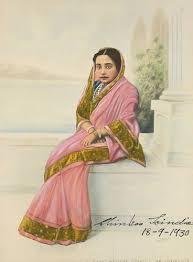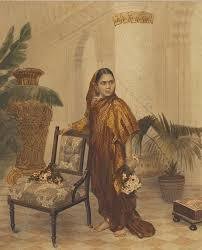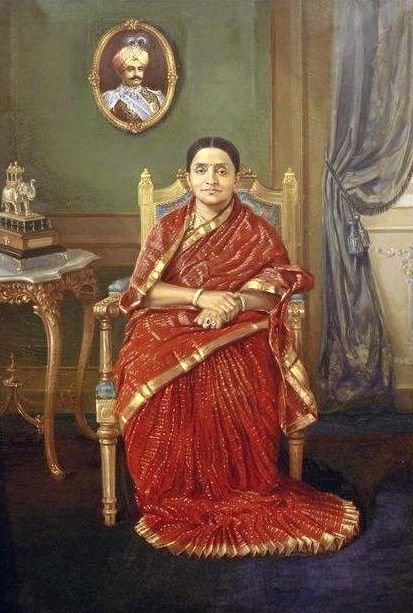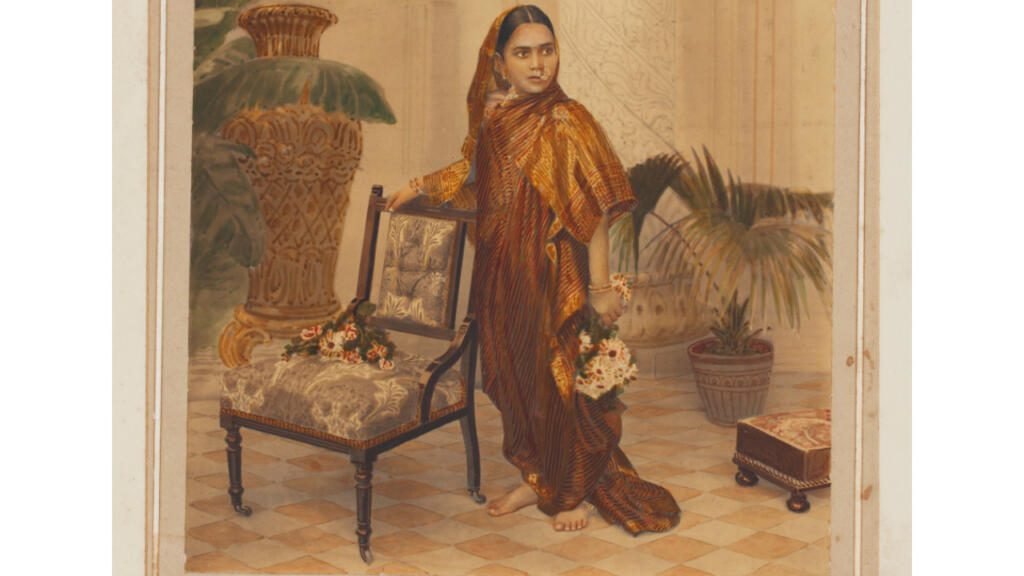Maharani Chinkoo Raje Scindia: The Little Queen of India and Her Enchanting Legacy

In the tapestry of Indian royalty, Maharani Chinkoo Raje Scindia shines brightly as a beacon of grace, intellect, and style. Affectionately known as the “Little Queen of India,” her life was a remarkable blend of personal elegance, social reform, and royal duties. Born to Sardar Madho Rao Balwantrao Mohite (Bhau Sahib) of Satara, Chinkoo Raje carved out a unique place in history alongside her husband, Maharaja Madho Rao Scindia I, and in her own right as a cultural and social trailblazer.

Chinkoo Raje’s life was a captivating journey marked by her vibrant personality and notable achievements. Her marriage to Maharaja Madho Rao Scindia I brought her into the heart of the Gwalior royal family. Despite her petite stature—standing at just 4 feet 3 inches tall—she was a towering presence in the realms of fashion, social reform, and intellectual pursuits. The Maharaja’s deep affection for her ensured that every detail of her surroundings was tailored to her needs and desires, emphasizing her unique stature.
As a social reformer and an avid reader, Chinkoo Raje was more than just a consort; she was a powerful motivator and an inspiration to many. Her passion for reading and traveling enriched her perspective, and her sharp mind made her a trusted advisor on various matters, including those related to state affairs. Her involvement in running her own women’s Darbar (Rani Darbar) highlighted her dedication to social causes and her influence in the governance of the state.
The period room curated as Maharani Chinkoo Raje’s suite offers a glimpse into the opulent and personalized world she inhabited. This room reflects the essence of her personality and her love for exquisite craftsmanship. The furniture, meticulously crafted from local North Indian wood, was designed to accommodate her petite frame and features intricate depictions of Hindu mythology—a testament to her cultural appreciation.

Her collection of textiles and jewelry was a notable highlight of the suite, showcasing her refined taste and love for luxurious adornments. The Maharani’s dressing table, adorned with golden bottles, combs, and scents, and her collection of tiny doll-like shoes made in Paris, stand as enduring symbols of her sophistication and fashion sense. The Viceroy’s wife, Mary Countess of Minto, captured the essence of Maharani Chinkoo Raje in her diary, marveling at the Maharani’s dazzling array of precious stones and the delightful details of her dressing area.
Adjacent to the European bathroom in the suite is the Mangal Snan Graha, an intimate space dedicated to the Mangal Snan ritual. This traditional ceremony involved the Maharani being bathed in a mixture of Chandan (sandalwood), Kumkum (vermilion), turmeric, milk, and rose petals. The ritual was a celebration of natural radiance and purity, reflecting the Maharani’s commitment to both spiritual and physical well-being.
Maharani Chinkoo Raje’s legacy extends beyond her role as the Maharani. Her contributions to social reform, her intellectual pursuits, and her impeccable taste in fashion and craftsmanship make her a fascinating and inspirational figure in Indian history. The curated suite and the artifacts within it offer a window into her world, capturing the elegance and significance of her life.
Chinkoo Raje’s story is a reminder of the profound impact that individuals of stature and vision can have on their society. Her life, marked by grace, intellect, and a deep connection to her cultural heritage, continues to inspire and captivate those who explore the rich tapestry of Indian royalty. The Little Queen of India, with her unique charm and indelible influence, remains a cherished figure in the annals of history.

The Jai Vilas Palace in Gwalior, a grand monument to the opulence and heritage of the Scindia dynasty, offers a fascinating glimpse into the life and times of Maharani Chinku Raje Scindia. This majestic palace, once the residence of royalty, now serves as a museum that beautifully captures the essence of the Scindia family’s storied past. Among its many attractions, the palace is renowned for its intricate chandeliers and a unique silver toy train, but it is also a repository of the personal legacy of Maharani Chinku Raje, whose distinctive presence left an indelible mark on the palace and its history.
The Scindias originally hailed from the Maratha community, and their legacy is deeply intertwined with the city of Gwalior. The Jai Vilas Palace, a symbol of their grandeur, showcases their royal lifestyle and the elaborate craftsmanship that characterized their era. Today, while part of the palace is a museum open to the public, the rest remains under dispute, with occasional visits from the current heir, Jyotiraditya Scindia, and his family.
Maharani Chinku Raje, known affectionately as the “Little Queen,” was as notable as her dynamic personality and leadership. The story goes that Maharaja Madhorao Scindia, her husband, was unaware of her petite height until their wedding day. This led to the creation of specially designed furniture and household items tailored to her ergonomics.

Visitors to Jai Vilas Palace can observe the unique adjustments made for Maharani Chinku Raje. The room dedicated to her features low-height furniture and specially designed washroom amenities crafted from walnut wood, reflecting a blend of French and Victorian influences. This custom furniture not only accommodated her height but also showcased the intricate craftsmanship of the time.
One of the highlights of the room is the Maharani’s collection of footwear and sarees. Her shoes, which are displayed on a beautifully crafted tree-shaped stand, and her saree collection, particularly Chanderi sarees, offer a glimpse into her personal tastes. The Maharani was known for her fondness for Chanderi fabric, which was highly fashionable during her time. Her love for these sarees is evident in the number of occasions she chose to wear them.
Maharani Chinku Raje was not just a queen with a unique stature but also a significant figure in the Scindia family’s affairs. Her decision-making skills and involvement in major family matters made her a confidante of Maharaja Madhorao. Her leadership and influence were profound, despite the physical constraints imposed by her height.
The palace also houses a handwritten letter by Maharani Chinku Raje, showcasing her tradition of expressing gratitude through personal correspondence. This letter, along with other personal artifacts, reflects her thoughtful and appreciative nature.

The Jai Vilas Palace stands as a testament to the grandeur of the Scindia dynasty and the unique contributions of Maharani Chinku Raje. Her bespoke furniture, exquisite footwear collection, and love for Chanderi sarees all contribute to the rich tapestry of her life. As visitors explore the palace, they encounter not just the opulence of a royal residence but also the personal story of a queen who, despite her diminutive size, had a towering impact on her family and her era.
In celebrating Maharani Chinku Raje’s life, we gain insight into the intricacies of royal life and the enduring legacy of a remarkable woman who continues to captivate those who walk through the corridors of Jai Vilas Palace.
Maharani Chinku Raje’s decision-making capabilities were instrumental in navigating the complexities of royal life, ensuring that the responsibilities and rights of the royal family were handled with utmost care and competence. Her role extended beyond the ceremonial; she was actively engaged in shaping the destiny of the Scindia dynasty, illustrating that effective leadership comes from within.
Visitors to the Jai Vilas Palace can witness the personalized elegance that Maharani Chinku Raje brought to her living space. The room dedicated to her is a fascinating display of how royal luxury can be customized to meet personal needs and preferences.
As visitors explore the palace, they encounter not just a display of royal opulence but also the enduring impact of a queen who, through her leadership and personal style, left an indelible mark on the history of the Scindia dynasty. Maharani Chinku Raje’s story continues to inspire, proving that true grandeur comes from within and that even the smallest details can tell the most compelling stories.


